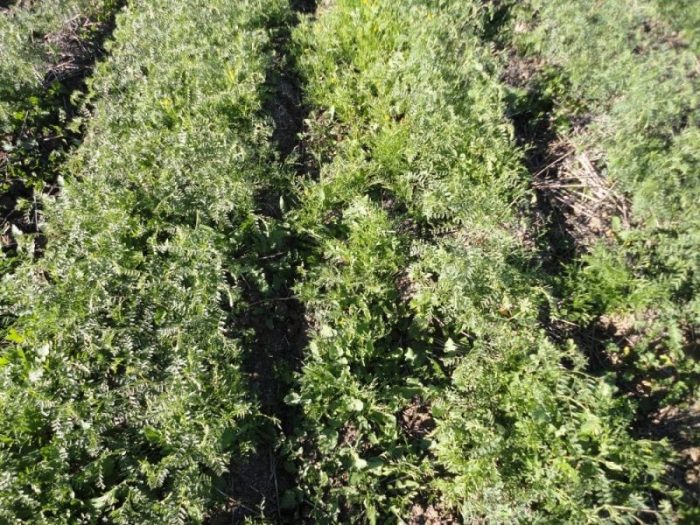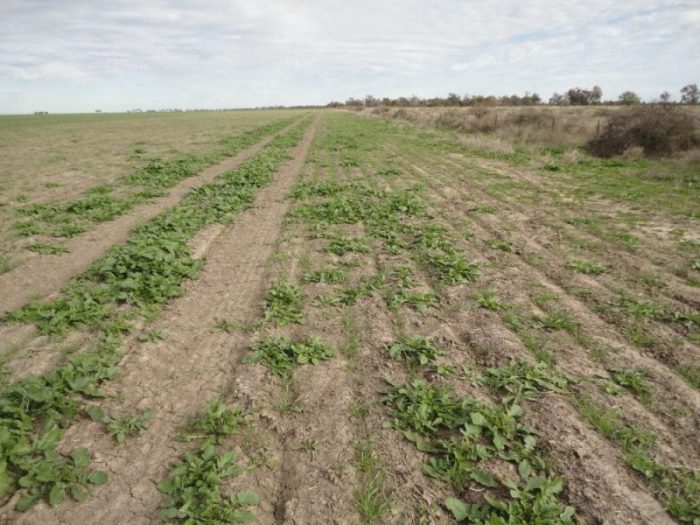
Farmers in Australia’s northern grain growing regions embraced no-till farming decades ago to preserve scarce soil moisture, reduce the risk of soil erosion during intense summer storms and to reduce their fuel and machinery costs.
In doing so, they increased their reliance on herbicides as the primary weed control measure. No-till farming coincided with the discovery and commercial release of glyphosate, which has remained the cornerstone herbicide of no-till farming worldwide.
In recent years, no-till farmers have noticed a change in the types of weeds growing on their farms. The weed spectrum is now dominated by hard-to-kill species such as flaxleaf fleabane (Conyza bonariensis), common sowthistle (Sonchus oleraceus) and feathertop Rhodes grass (Chloris virgata) that have a natural tolerance to glyphosate’s mode of action. Other weeds, such as awnless barnyard grass (Echinochloa colona), have evolved resistance to glyphosate and other herbicide modes of action.
These weeds now represent a serious economic problem for some no-till farmers where some paddocks become so infested that growing crops is no longer a viable proposition. This prompted a renewed interest in the possibility of re-introducing cultivation to otherwise no-till farming systems as a way to bring these difficult weeds under control.

Credit: Yash Dang
Having seen the benefits of no-till farming over so many years, most no-till farmers were reluctant to resort to cultivation for weed control, fearing that any cultivation would reverse the beneficial effects of years of non-disturbance of the soil.
To determine the effect of one-time tillage in no-till farming systems, trials were established at fifteen sites throughout the northern farming region, representing a range of soil types. The trials investigated the effect of the type and frequency of cultivation on soil characteristics such as organic carbon and nitrogen, nutrient stratification (phosphorus), moisture retention, soil-borne disease, beneficial macro-organisms, soil and nutrient runoff.
The key results of the trials demonstrated that one-time tillage in a no-till system could reduce weed populations and improve crop productivity in the first year after tillage, with no impact in subsequent years. The tillage operation reduced plant available water in short-term, which could result in a missed sowing opportunity if there was insufficient rainfall following the tillage operation.
In well-structured and robust soils, such as Vertosols, soil physical properties were not impacted. However, soils with poorly structured topsoils (e.g. Dermosols) and soils with sodic subsoils (e.g. Sodosols) suffered short-term negative soil health impacts as a result of cultivation, particularly if the cultivation was done when the soils were dry.
Neither the type of tillage implement used nor the frequency of operations within the season had a significant effect on crop productivity or soil health.
For farmers faced with overwhelming weed infestations, this was good news. These results indicated that with some care in terms of timing, cultivation could be used as another weed control tool in an integrated weed management program.
Re-introducing occasional cultivation for weed control also opens the door for farmers to address other constraints to no-till farming such as nutrient stratification and soil-borne diseases.
Central Queensland no-till farmers, Darren and Tanya Jensen, hosted one of the cultivation trials in 2012, 2013 and 2014, and were able to see the results as they related directly to their soils and environment.
The Jensens wanted to know if cultivation would be an option to drive down numbers of hard-to-kill weeds such as fleabane and feathertop Rhodes grass that had become a constraint to production in some paddocks within their 20-year no-till farming system.

Credit: Yash Dang
They were surprised to find out that even the most aggressive tillage operations did not do much damage to the Vertosol soil on their property. This meant they could include strategic tillage as a tool to help manage the growing weed problem on ‘Grandview’ and their leased blocks. In 2015 Darren cultivated 1400 ha of their 1750 ha property with two passes of a chisel plow and then followed up in 2016 with one pass of a disc chain.
Using these relatively light cultivation options the Jensens were able to leave out three fallow herbicide applications from their spraying program, saving $84 thousand in chemicals. The following year Darren used the disc chain again across about 40 percent of the farm, again targeting fleabane and feathertop Rhodes grass.
This concerted effort has restored about 85 ha of land that had become too weedy for cropping and lifted profits. Having used cultivation to drive down weed numbers in a fairly intensive way Darren expects that they will cultivate much smaller areas each year in the future.
Cultivation is best suited to weed species with seed that does not remain viable when buried, as subsequent cultivation may cause a re-infestation of some weeds such as wild turnip (Rapistrum rugosum).
In terms of managing herbicide-resistant weeds, or weeds that are inherently hard to kill with herbicide, the infrequent use of cultivation can be considered as a viable option in Australia’s northern farming systems. The main consideration is to conduct the tillage operation for maximum benefit without sacrificing a planting opportunity and at a moisture content that preserves soil structure.
Like herbicides, cultivation should not be seen as the only or best way to control weeds in a no-till farming system. The greatest lesson learned from the over-reliance on herbicides has been that farming systems must use a diverse array of tactics to manage weeds. Sustainable farming relies on maintaining low weed numbers through the prevention of seed set and the removal of individual weeds that evade each control measure.
These findings are described in the article entitled Strategic tillage in conservation agricultural systems of north-eastern Australia: why, where, when and how? published in the journal Environmental Science and Pollution Research International. This work was led by Yash Dang from The University of Queensland.








